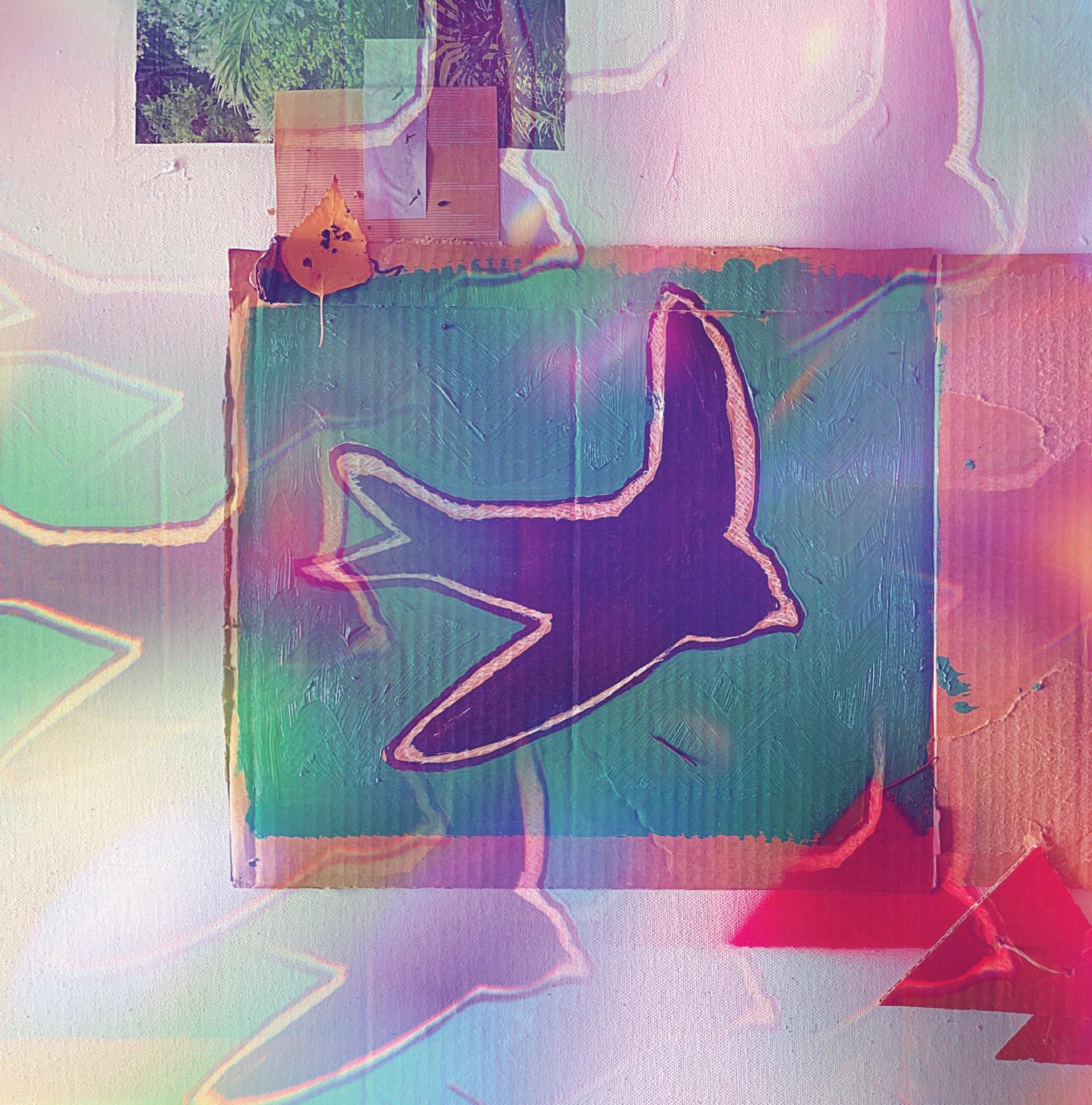
8 minute read
ART IN A DIGITAL AGE
SA-born Paris-based artist and DJ Mo Laudi’s ‘Movement (Mayibuye)’, 2020, is a 15-minute audio-visual installation exploring ideas of access and exclusion. It premiered at last year’s OORtreders Festival in Belgium
The world of art, once abuzz with tightly packed ART IN A DIGITAL AGE humans at art fairs and gallery events, has understandably gone online. The results are surprisingly optimistic.
WORDS SEAN O’TOOLE
PHOTOGRAPHY SUPPLIED FOR MORE THAN a decade now, Tegan Bristow, a Johannesburg-based digital media expert, has been exploring the relationships Africans have with technology. How, she found herself asking, can we innovate, not just with new tools but also by developing our relationship with technology? It’s an important question, one that Bristow is finding answers to in the digital arts, a broad category of creative practices made possible by innovations in digital computing. Think photography, illustration, animation, motion graphics and 3D, to name a few speciality areas. As part of her research and activism, Bristow produced a doctoral thesis focusing on African cultures of technology and established a festival.
Founded in 2014, the Fak’ugesi African Digital Innovation Festival aims to narrow the gap between African cultural practices and technology. Fak’ugesi (‘put on the electricity’ in Zulu) has staged workshops, hackathons, game jams, exhibitions and sober-minded talks. So how did the pandemic impact a cultural festival pitched at digital natives? A lot and a little, says Bristow, who also teaches interactive digital media at The Wits School of Arts. ‘We were able to present and output work with artists without too much trouble due to its digital nature,’ says Bristow of the 2020 festival. At the same time, the festival, which has a big youth following and strong developmental focus, had to migrate its community-orientated approaches online.
In a time when digital hook-ups are the norm, and overload has cultivated selective online interaction, Fak’ugesi managed to attract roughly 5 000 unique users. This is remarkable, especially
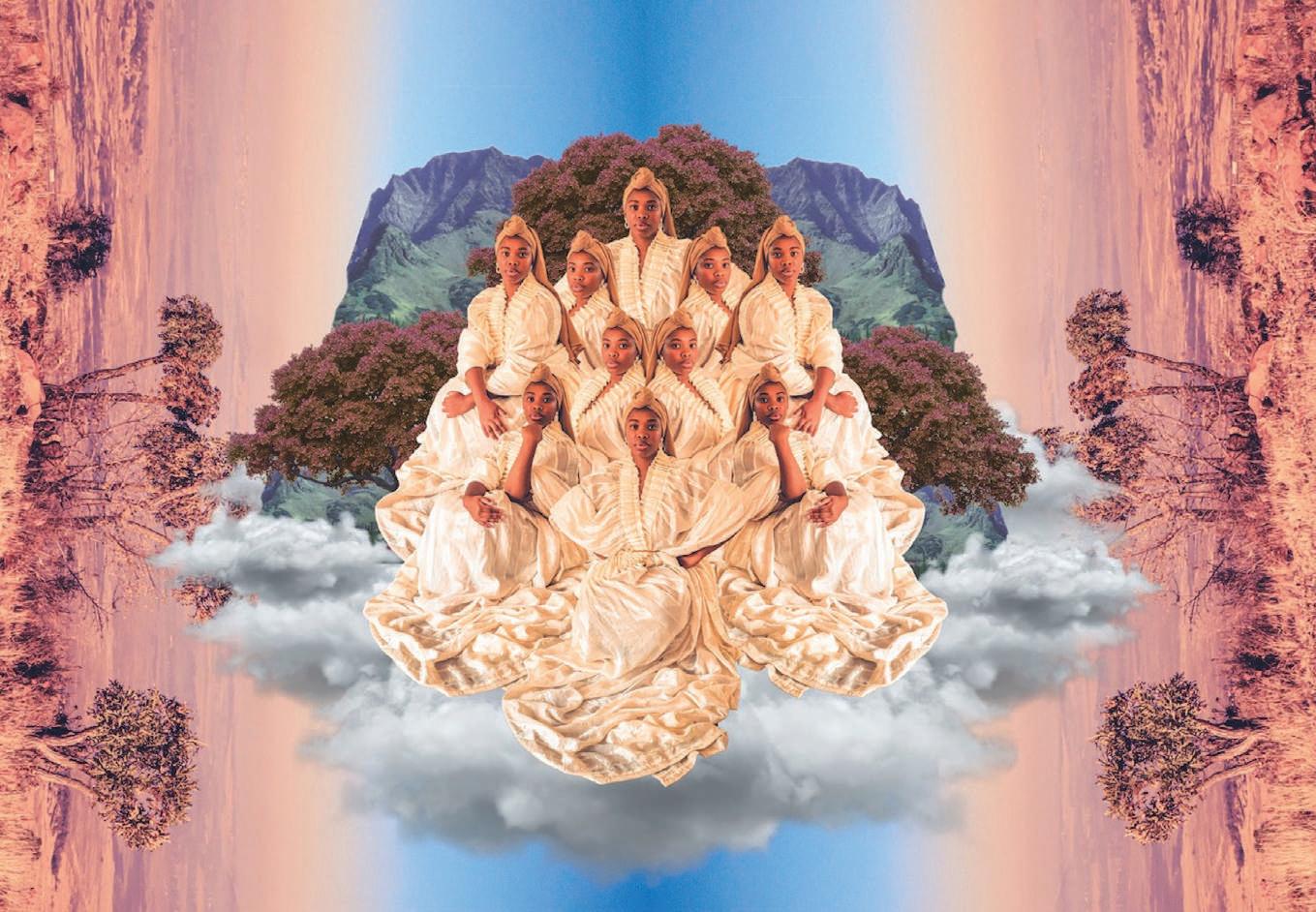
given the niche category the digital arts still represent in Africa. Its five online exhibitions drew the largest viewership. The invited curators included Xopher Wallace, a local augmented reality (AR) artist, and Elisabeth Efua Sutherland. Like her grandmother, the prominent Ghanaian playwright Efua Theodora Sutherland, Elisabeth began her career in drama but pivoted to contemporary art and performance in the mid-2010s. Represented by dealer Marwan Zakhem’s Gallery 1957, which is based out of Accra and London, Sutherland has collaborated with the renowned fantasy coffin maker and artist Paa Joe, among others.
Bristow met Sutherland virtually when she signed up for Fak’ugesi’s curator bootcamp. ‘We had a very large list of applicants from across the continent and selected 30 to participate,’ says Bristow. ‘The process was astounding for us, not only in terms of being able to work with artists like Elisabeth, but in seeing the real interest and urgency from across the continent to produce and publish digitally in a supported structure.’ The exhibitions conceived by the invited curators not only attracted viewers but
The unique referential style of digital collage is apparent in Johannesburgbased artist Puleng Mongale’s ‘Heaven on Earth’, 2021, presented by Latitudes also landed some participants with industry work. Wallace, for instance, was commissioned by fair organiser Art Joburg to collaboratively produce all the AR content featured on their Instagram feed.
Art fairs, which are convivial affairs where people were once tightly packed into a congested space, have suffered the most as a result of the pandemic. Revenues from floor rentals have bombed. Latitudes, a rival to Art Joburg, has responded by pitching itself as an all-year digital event. In February it partnered with dealership Doyle Wham to present a solo exhibition of digital collages and self-portraits by Soweto-born

LEFT The sculpture and photo by Kenyan-born artist Mũchiri Njenga is based on a character in his 2011 dystopian sci-fi film Kichwateli (Swahili for ‘TV-head’), and appeared at Tegan Bristow’s 2015 Goodman Gallery exhibition ‘Post African Futures’ BELOW Dineo Seshee Bopape’s digital video ‘I am sky’, 2013, was also part of ‘Post African Futures’
Puleng Mongale. Retail galleries, which have come to rely heavily on fairs, have also been forced to innovate. In a year of massive sales decline (36% on average globally in the first half of 2020), online trading has emerged as a growth category (rising from 10% of total sales in 2019 to 37% in the first half of 2020) and a beacon of hope.
Recognising this, Liza Essers of Goodman Gallery has introduced a new online sales platform, South South, to bring together 50 international galleries focused on art from the Global South. The logic of this online marketplace is not unfamiliar to collectors as it combines aspects of how art fairs and auctions work, bringing together a variety of traders interested in pitching work to digital bidders. But it’s more than that, says Goodman Gallery’s head of communications Robin Scher: ‘South South was conceived by galleries for galleries to create an environment that responded to their needs, to broaden audiences, find commonality, share histories and bring communities together.’ For her part, Bristow has been impressed by how Latitudes, a physical art fair launched in 2019, quickly and successfully pivoted to an online format.
Ecommerce websites are, however, an increasingly static way to drum up business. One social media platform has emerged as an important ‘discovery tool’ for serious collectors. ‘Instagram provides a way for art-hungry millennials to get an art education and make that emotional connection with individual artists,’ noted Forbes in 2016. It has also allowed younger collectors to bypass the snobbishness of an industry that has relied on greying wealth. Artists have also recognised this.
In February 2019, when Nelson Makamo’s portrait of his 11-year-old cousin, Mapule Motaung, appeared on the cover
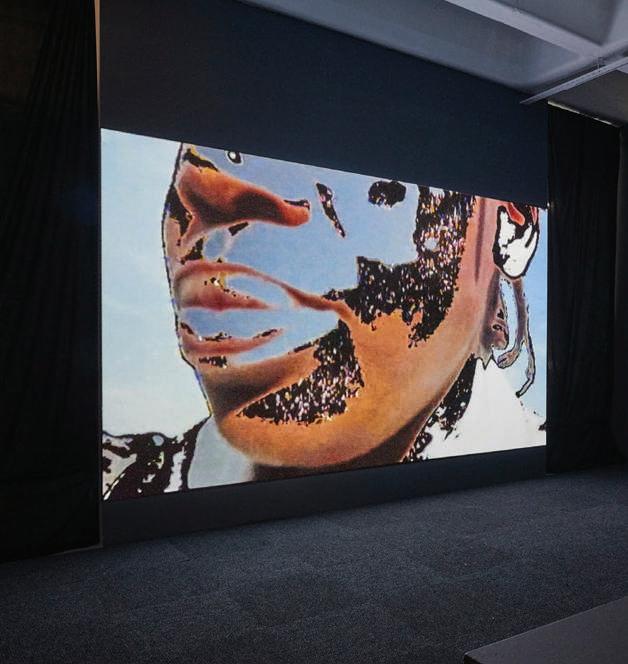
LEFT Mia Thom’s ‘Idée Fixe’, 2020, features cello music emanating from an empty cello case BELOW Elisabeth Efua Sutherland’s ‘Sui Generis’, performed at the Chale Wote Street Art Festival, in Accra, Ghana OPPOSITE FrancoCanadian artist Kapwani Kiwanga’s ‘Ifa Organ’, 2013, at ‘Post African Futures’
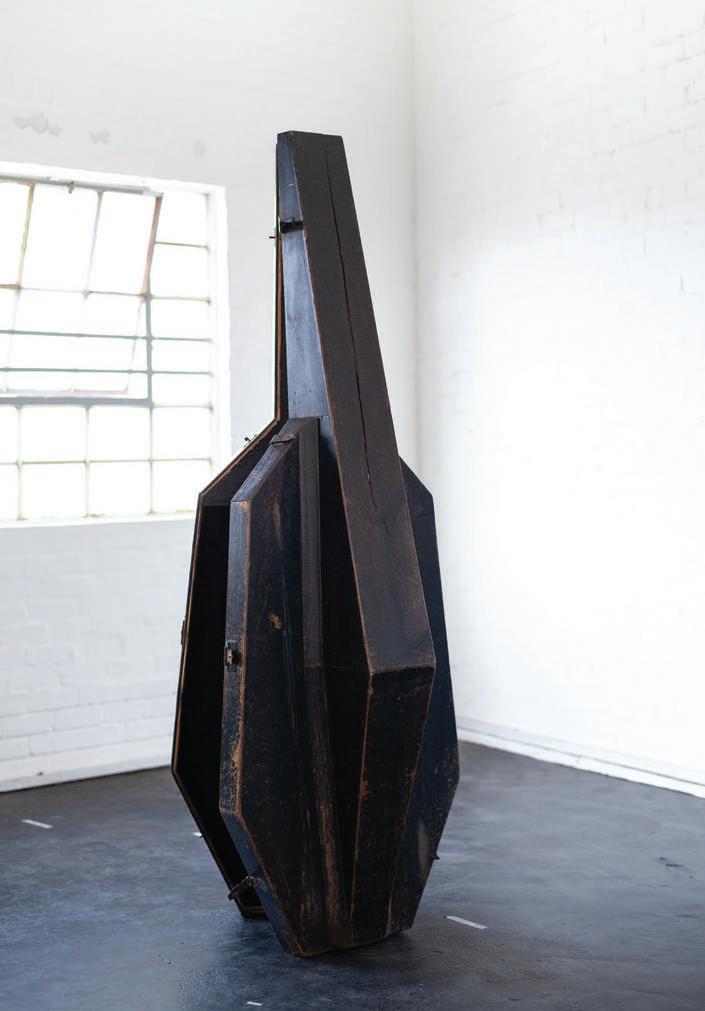
of Time magazine, the accompanying article flagged his use of Instagram to connect with audiences globally. ‘That’s one of the exciting developments I’ve seen in the art world since I started,’ Makamo was quoted. ‘There’s no longer really that line between the South American Artist, the European Artist, the African Artist.’
The pandemic has amplified Instagram’s utility. Mia Thom, a Cape Town artist fascinated with synaesthesia (‘sensorial crosswiring’ as she defines it), has found the platform useful for connecting with new audiences. ‘It’s been a particularly valuable tool during lockdown as physical exhibitions and other opportunities were postponed or cancelled,’ says Thom, who recently exhibited two sound sculptures (music instrument cases accompanied by an original score) at Everard Read Circa, Cape Town. The invitation to show started with Thom sharing a post along with an invite to her Woodstock studio on Instagram with the gallery’s curator, Lena Sulik.
Digital promotion is now a recognised skillset being taught at art schools. ‘Websites have become a core part of our teaching lately as we realise students must be able to sidestep galleries to get their work out there, to be noticed and to be taken seriously,’ says University of Pretoria art lecturer Johan Thom (no relation to Mia Thom). He says Instagram is a useful tool to organically bolster visibility, but cautions against confusing what are

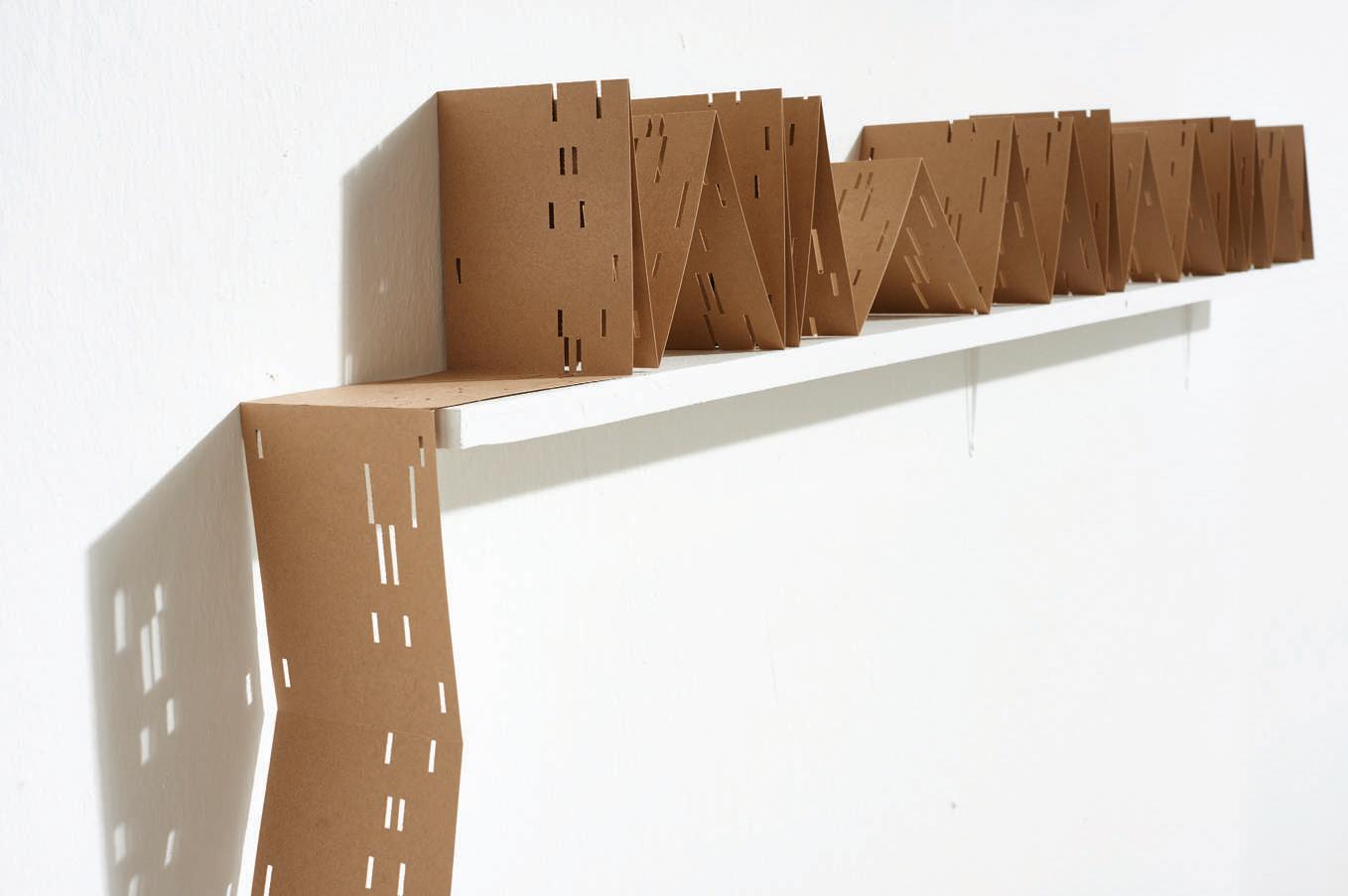
essentially promotional activities typical of the wider digital economy with art itself. Thom, who completed his doctoral studies in London and was previously involved in computer arts festivals in Slovenia, adds that it is important to distinguish between computer and digital art. ‘Digital, I would argue, is often misleading as almost all photographers use digital means these days, as do video artists,’ he says. ‘Computer, as clumsy as that is, is a bit clearer and points towards some workable definition: someone who actually uses the computer as primary means to create art.’ This definition tends to exclude many of the artists included in Bristow’s 2015 Goodman Gallery exhibition ‘Post African Futures’, among them Müchiri Njenga, Dineo Seshee Bopape and Kapwani Kiwanga. It also excludes many of the artists suggested by curator Chloë Reid, among them Puleng Mongale, Natalie Paneng and Abri de Swardt. Johannesburg-based Reid has produced six exhibitions in an annexe of printmakers Fiona Pole and Didier Presse’s studio at 44 Stanley. She points to a lack of money and support for experimental work using new digital media as a stumbling block. ‘It’s a struggle even to get video work into the gallery,’ says Reid. ‘I beg and borrow AV equipment for each show.’ The fragile ecology for digital arts in SA has prompted some artists to pursue careers abroad. Johannesburg-born Bogosi Sekhukhuni, who participated in Bris‘The global uptake of digital tools during the tow’s 2015 Goodman Gallery show as well as the controversial tech-minded pandemic has positively impacted perceptions 2016 Berlin Biennale, has found increasof digital art in SA’ ing favour in New York. His 2018 debut in that city included his breakthrough work, ‘Consciousness Engine 2: absentblackfatherbot’, 2013, which presents disembodied heads on a screen narrating a series of Facebook chats between Sekhukhuni and his estranged father. The cross-over video-animation work was previously shown at Goodman Gallery in 2014. The future for the digital arts in Africa is nonetheless positive. The global uptake of digital tools during the pandemic has, says Bristow, positively impacted perceptions of digital art in SA. ‘The value of digital creatives is suddenly much more evident to everyone across sectors.’




